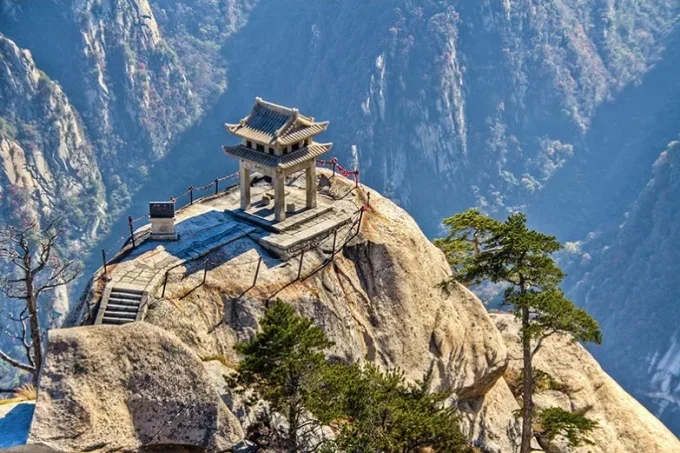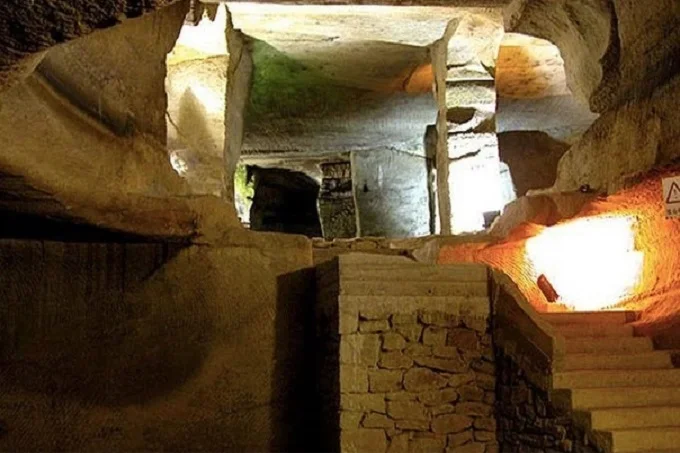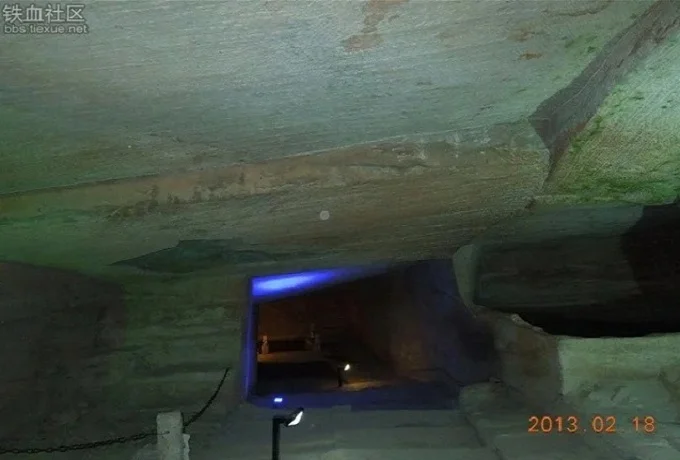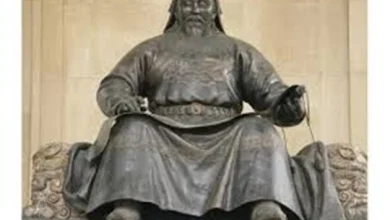Who created the mysterious Huashan caves in China?

The Huashan Caves are a complex of huge man-made caves and one of the most popular tourist destinations among the people of China. However, despite its popularity, it is still not known for certain who and when they were created. The final goal of the mysterious builders is also unknown.
Huashan Caves are located in Anhui province. They are traditionally associated with Mount Huangshan, which is part of the sacred five mountains of China. Huangshan translates as a blooming mountain. This name was obtained because the peaks of these five mountains resemble a lotus flower.
There are a large number of Taoist monasteries, pagodas, and other places important for religious pilgrimage. In addition, there is also a considerable number of buildings of the Ming and Yuan dynasties dating back to the XI-XVII centuries. For this reason, Huangshan Mountain has been included in the UNESCO list of natural heritage.
Despite the very similar names, Huangshan Mountain is located quite far from the Huashan Caves – you need to travel by train for a day. Therefore, sometimes they confuse the belonging of the caves, attributing their location directly to Mount Huangshan. (It should be noted that there are caves there too, but not so interesting).

But back to the Huashan caves. The complex consists of 36 known caves. They were discovered relatively recently – in 1999. Then a local resident who accidentally stumbled upon them, reported his find to the authorities. Since then, their active study and development began. Some of the caves were partially or completely flooded with water. So, for example, from caves numbered 2 and 35, water was pumped out by three pumps for 12 days. The total volume of water removed was 18,000 tons.
The most amazing thing about Huashan Caves is the scale. They are amazing. For example, the area of Huashan Cave reaches 4800 square meters with a length of 140 meters. And the largest of the Huashan complex, called the “Underground Palace”, has an area of 12,600 square meters.
Many researchers and visitors never stop asking who, when and why could have done such large-scale work to create such a colossal complex. But there is no answer to these questions. The reason for this is the complete absence of written or any other mention of the work on the creation of the Huashan caves.
Such a tacit unity of historical chronicles caused a huge number of versions about the origin and purpose of the caves. Starting from the fact that they could be used to house armies or conduct secret spiritual practices. And ending with traces of either resource-extracting work of a highly developed civilization, or an unsuccessful preparation for the bunker of the same unknown ancestors. Such versions, although they seem fantastic at first glance, could explain the absence of mention of the Huashan caves.
Chinese scientists tried to date the caves by the ceramic items found in them. As a result, they came to the conclusion that the approximate time of their creation was the era of the Jin Dynasty (265-420 AD). The same age is confirmed by studies of stalactites.
A huge number of chisel marks on the walls and ceiling leave no doubt that the caves are precisely man-made. This is also stated in the official Chinese descriptions of the object. However, in addition to traces of hand tools, some areas of the treated surfaces leave doubts about the use of only manual labor, but more on that later. Here I would also like to note that no traces of fires or soot were found in the caves. This leads to additional questions about what kind of means was used to illuminate the space when carrying out such large-scale and long-term works.

In addition, a number of Chinese sources claim that there is almost no echo in the Huashan caves. The sources emphasize that ideal sound absorption is not a random factor. However, whether this is true or not is an open question.
There is a lot of controversy about the rock in which the caves are located. There have been numerous mentions that it is granite. However, apparently, the material is various types of sandstones. The confusion occurred precisely because of the identification of the names Huashan and Huangshan. The rock of the Huangshan Mountain is granite, the rock of the Huashan cave complex is sandstone (or quartzite).
When visiting some of the Huashan caves that have been opened to date, one really does not leave the feeling of the complex’s adaptability for finding people. There are stone bridges, stairs, various passages, and the walls are supported by massive rock columns. Faced with such a careful approach of architects to ennobling rocky spaces, there is almost no doubt about the existence of a single plan, which the builders strictly adhered to.
And yet, there are some nuances, the discarding of which can lead to a fall into an unforgivable mistake for researchers.
Although the Huashan caves are everywhere (including in official Chinese sources) referred to as man-made, there is no mention that the rock was completely chosen at the time of their creation. This topic is discussed as one of the mysteries because the mass of such a sample is colossal, but it has not been discovered. The answer to this question is probably the fact that outside the emotional discussions of the object, the caves are spoken of as karst, which means that huge cavities could have formed naturally, and only later they began to be refined. In such a situation, the work of the creators of the caves, although it continues to evoke unfeigned respect and even amazement, no longer seems to be something out of the ordinary.
Another indirect confirmation of this version comes from South America, where the Abismo Guy Collet caves, 671 meters deep (2006) and Cueva Ojos de Cristal, 16 km long (2009), were recently discovered in the sandstones and quartzites of the Table Mountains. These caves are also of karst origin. And under certain conditions, quartzite can be dissolved in water. There was plenty of water in the Huashan caves, as mentioned earlier.
Another factor is the layered structure of the mountain. The rock in caves can fall off in pieces, which also simplifies the surface treatment process. However, there are still traces on the walls and ceiling of the caves that can be attributed to mining equipment or jackhammers. And, probably, this technique was present there, but… modern. And that’s why.
There is no sense of antiquity in the Chinese mentality. For example, if an ancient building burns down, for example, the 10th century, a new one is rebuilt in its place, following the example of the lost one. And to the question of what period to date this structure, you get a very unambiguous answer that the same X-th century. The foundation is the same, but the remake – well, it’s almost an exact copy, which means you can draw a direct parallel. It may seem strange to us, but there is a vivid example of China’s modern “antiquity” – the Great Wall of China.
In addition to this, it turns out that part of the ennobled territory of the Huashan Caves is a remake. Those very bridges and steps are modern concrete. Before opening part of the complex for tourists, it was thoroughly patched up, made as convenient as possible, and lighting devices were placed. It seems that the stone columns, if not made anew, were reinforced with modern mortar.
Here is some indirect evidence of the use of concrete:



In conclusion, I would like to note the following. A certain aura of mystery about the origin of the caves may be quite deliberate. The more secrets, the higher the popularity of the place. That is why the legacy of an ancient, highly technically advanced civilization is being chased around the world. Especially where it is not.
And this is the most surprising. In the same Egypt or South America, there are a lot of such traces, but they are either not noticed or explained by very shaky versions and hypotheses. At the same time, monuments, the origin of which may well fit into the existing picture of ancient (or not at all ancient) history, are credited with very ephemeral connections and explanations, thereby casting a shadow on real artifacts that are very, very ambiguous in their origin.
However, it is impossible to draw unambiguous conclusions regarding the Huashan cave complex. Despite the fact that at the moment the object looks like a mixture of handmade and modern refinement with the use of technology and concrete in completely natural caves, photographs can be deceiving, and reasoning, in conditions of a small amount of information, is somewhere wrong. We hope that in the future, there will be more information about the work carried out here at the beginning of the 2000s, and about the original state of the caves.
A number of questions can be answered based on the results of the expedition, which, perhaps, can be organized as part of the study of the heritage of ancient civilizations on the territory of modern China.




